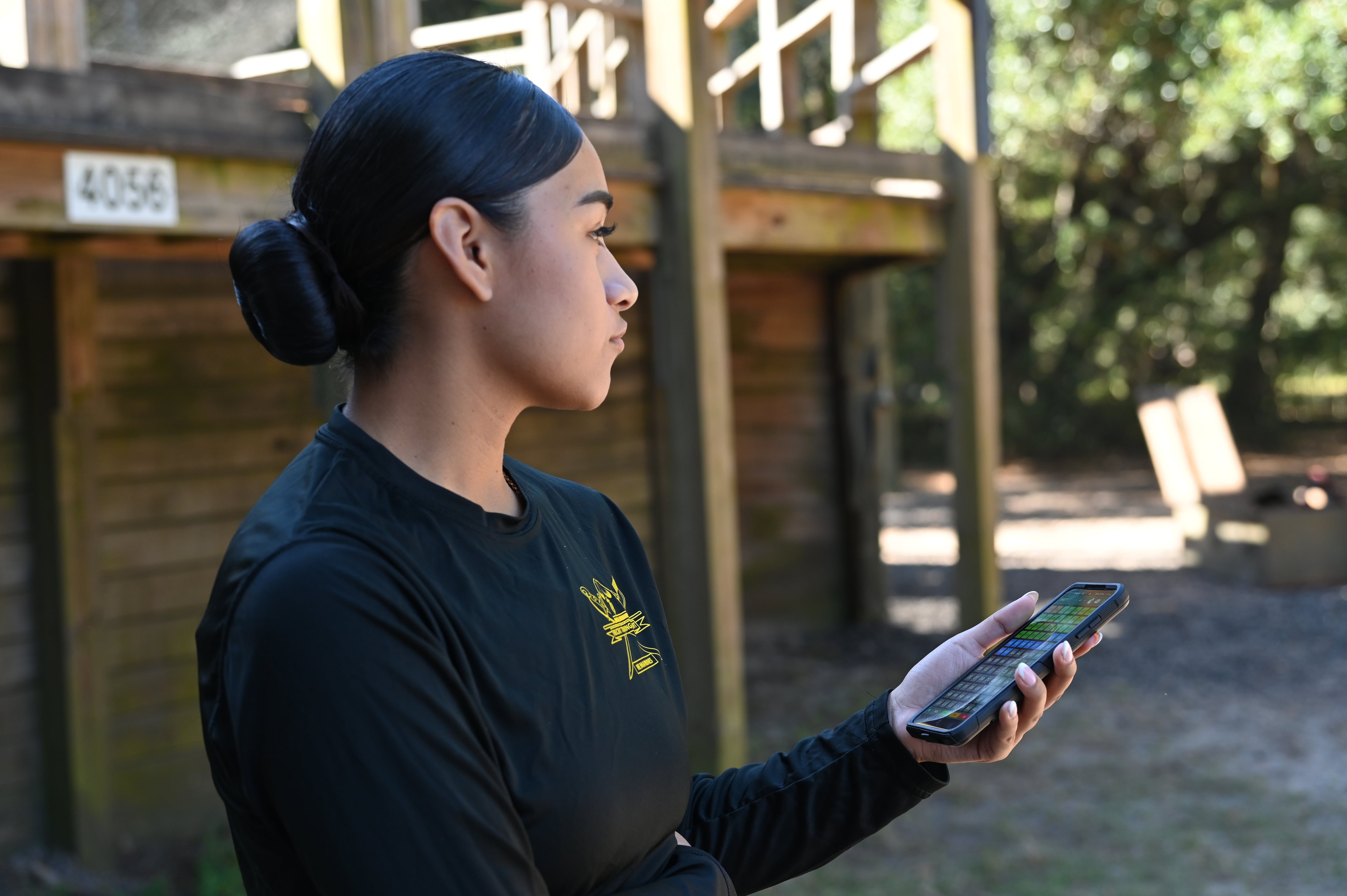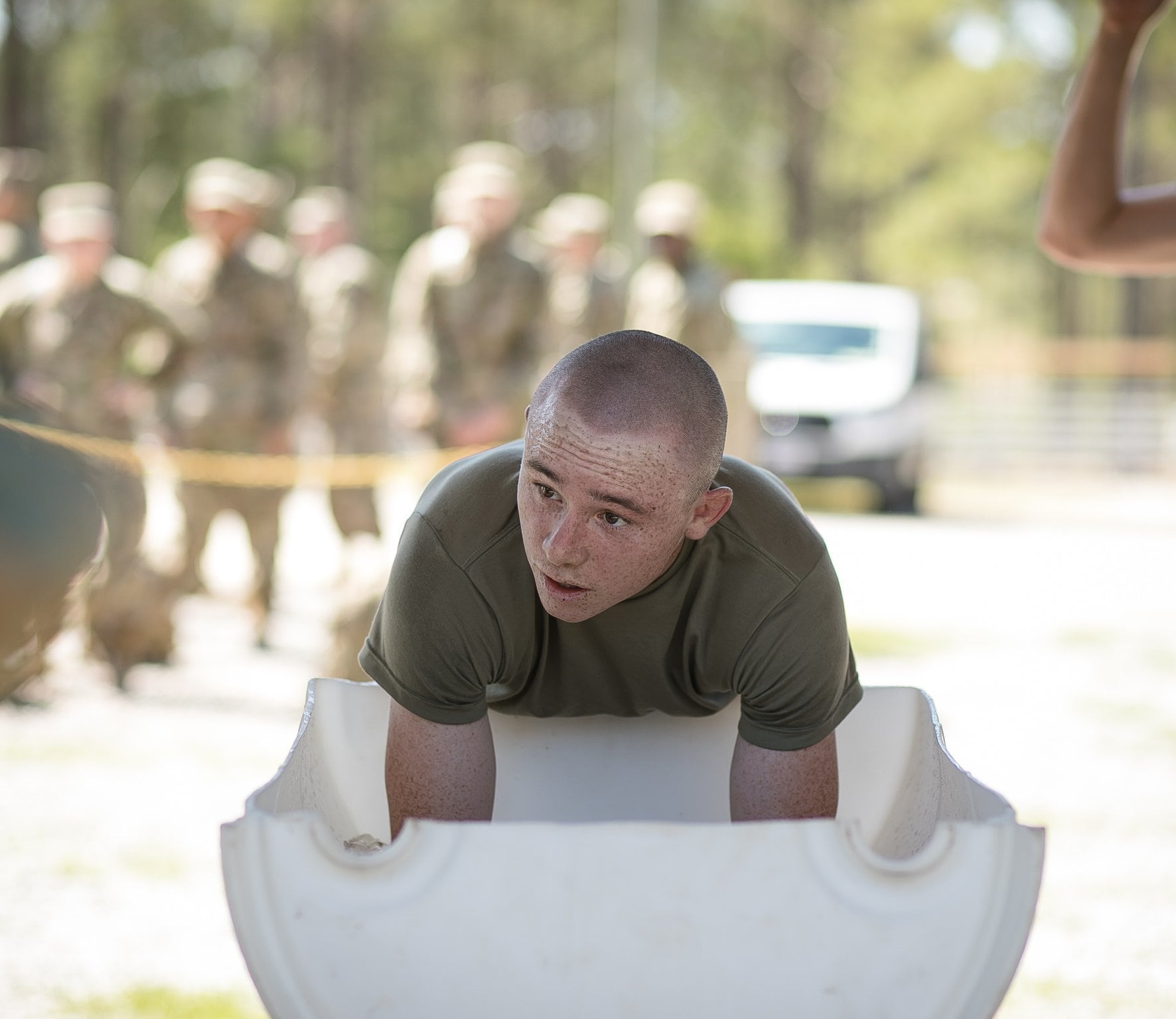A wearable device the Army has developed over the past five years and is in use by both Army and Marine Corps training units could help prevent, heat illnesses among troops.
The device is called the Heat Illness Prevention System, or HIPS. Mark Buller, a research physiologist with the Thermal and Mountain Division of the U.S. Army Research Institute of Environmental Medicine.
Buller shared recent developments and updates for the device’s use among soldiers and Marines at the Fort Moore, Georgia’s annual HEAT Forum on Wednesday.
The system includes a chest strap sensor, smartphone application and algorithms. Buller and his team began work collecting data and monitoring troop’s heart rate, skin temperature and other measures in 2019, but was put on hold during the COVID-19 pandemic in 2020.
Since then, it has been used to gather data at events such as the 75th Ranger Regiment’s Ranger Assessment and Selection Program, Marine Corps Recruit Depot Parris Island, South recruit training, during ruck marches and runs during infantry basic training at Fort Moore and on the 12-mile ruck, runs and land navigation at the 169th Engineers Sapper Leader Course at Fort Leonard Wood, Missouri.
Slightly more than 10,000 of the users were in basic training or infantry units, the other 4,000 were in special operations units.
“We think we’re at an end point where we can provide you a tool to help manage risk of heat illness in an active way,” Buller said.
Such a device will become more necessary if preliminary data from another Army research regarding temperatures and training days proves accurate.
Maj. Erik Patton, who is currently studying warming trends at Army basic training installations through a program at Duke University, shared data at the forum that he’s gathered on potential temperature increases at those locations in the coming decades.
By mid-century half of the training days at those posts will have minimum temperatures above the category I heat threshold of 78 to 82 F.
His data also indicates a 300% increase of days at the red flag warning, or 88 F. That condition, short of the more severe black flag conditions, limits strenuous work for those not acclimated to six hours or less per day, according to Army regulations.

Buller’s team has sampled data from 14,000 troops since 2018. The Marine Corps has used the system since 2021 to monitor heat illness symptoms among recruits at Parris Island during the Crucible, a three-day field training event at the end of recruit training.
In 2023, Marine Lt. Gen. Kevin Iiams, requested procuring the HIPS device for use across Marine Corps Training, Buller said.
“Our system has enabled us to alert to a heat illness before it happens and be able to take action before somebody falls over and has a severe heat injury,” Buller said in an Army release.
The smartphone application part of the system allows users to monitor as many as 500 individuals and spot when a user’s vital signs are indicating a potential heat illness coming on, Buller said.
“On the app, we can see the changing heart rates and other variables,” said Emma Atkinson, a USARIEM Biomedical Researcher. “The system is programed to sense when someone is approaching higher than appropriate heat exposure levels. We will see green, yellow and red colors on the screen indicating how our Service Members are doing.”
Through their research, Buller also said that they’ve noticed a correlation in a user’s gait that helps predict the onset of heat illness. When users begin to “wobble,” that’s often a sign that they’re about to have a heat-related incident.
That’s only applicable in events where there is a regular gait to measure, such as ruck marches or runs.
Researchers have been able to identify indicators and predict an approaching heat illness incident between 3.5 to 10 minutes before the incident occurred in some of the studies, Buller said.
Using heart rate and skin temperature, researchers have been able to create algorithms to estimate core temperatures, a key indicator of potential heat illness.
Todd South has written about crime, courts, government and the military for multiple publications since 2004 and was named a 2014 Pulitzer finalist for a co-written project on witness intimidation. Todd is a Marine veteran of the Iraq War.








